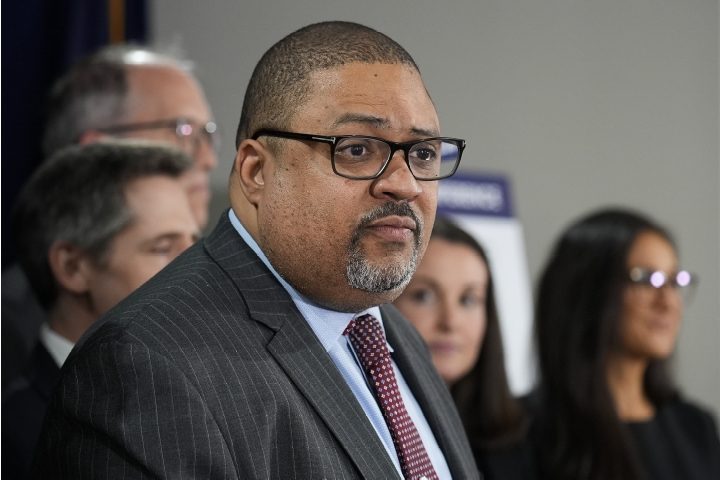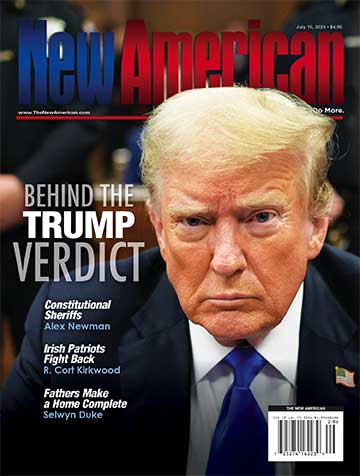
In a brief filed with the U.S. Supreme Court on Tuesday, New York City’s infamous and corrupt Soros-backed District Attorney Alvin Bragg urged the high court to approve the ATF’s egregious and unconstitutional expansion of its powers.
The ATF, taking its cues from the Biden administration’s anti-gun agenda, ruled that guns built at home from kits and software available on the internet must all have registration numbers, and those selling them must perform background checks on their customers.
History of the Case
The high court agreed in April to consider the Fifth Circuit Court’s ruling against the ATF, and Bragg wants the court to overturn it.
The appeals court properly slapped down the ATF:
The agency rule at issue here flouts clear statutory text and exceeds the legislatively-imposed limits on agency authority in the name of public policy.
Because Congress has neither authorized the expansion of firearm regulation nor permitted the criminalization of previously lawful conduct, the proposed rule constitutes unlawful agency action, in direct contravention of the legislature’s will….
As such, the proposed definition is an impermissible extension of the statutory text approved by Congress.
Indeed, making firearms at home has a long history in the United States:
Consider the long-standing tradition of at-home weapon-making in this country. We assume Congress was familiar with the relevant historical context when writing the GCA, yet Congress made no clear reference to aggregations of weapon parts … in the text of the GCA….
ATF cannot so transform the GCA to include aspects of the nation’s firearm industry that were previously — and purposefully — excluded from the statute.
Bragg’s Claims
In his brief, punctuated repeatedly with false statements, Bragg made several claims. He says that “ghost guns pose a significant danger to public safety,” that “ghost guns have increasingly fallen into the hands of dangerous individuals who would otherwise be barred from possessing firearms,” and that “ghost guns are functionally equivalent to traditional guns and can be easily assembled with minimal effort.”
He also claims that ghost guns “have subjected New York City to a proliferation of ghost guns — unserialized, unregistered, and untraceable firearms that exacerbate the dangers of widespread gun possession while impeding efforts by law enforcement and local prosecutors to curb violent crime.”
Adding to the list of lies, AG Bragg declared that
Although New York City remains the safest big city in America, the growth in the use of ghost guns makes the City’s streets, schools, public spaces, and homes significantly more dangerous….
The ease of accessing these products online or creating them using 3D printers has allowed dangerous individuals to amass arsenals of deadly handguns and rifles, even when they are unambiguously disqualified from possessing such weapons under state law.
The Facts
Let’s deal with the most obvious lie first: The Big Apple “remains the safest big city in America.” In fact, on June 30, the New York Post called it out, reporting “that shootings this week in the city spiked by a whopping 50% last week compared to the same period last year — with the number of victims spiking by an even wider number.”
The NYPD reported that 117 people have been hit in 98 shootings over the past month (June). This is up from 81 people shot in 74 incidents over the same time span in 2023 — a 44-percent jump in victims and a 32-percent bump in shooting incidents.
Furthermore, that ghost guns are showing up in increasing numbers during investigations of gun-related crimes is an exaggeration. In fact, since the start of the NYPD Commissioner Eric Adams’ administration, police have recovered some 1,050 ghost guns. That’s only six percent of the more than 17,000 retrieved from crime scenes.
Regulations Won’t Work
Regulations on ghost guns, such as serial numbers, background checks, etc. — will likely not actually reduce crime. This is because:
- The software and instructions for building ghost guns at home are already out there;
- 3D printers are readily available, at prices as low as $200;
- It takes time to print out the lower receivers and get them into usable condition;
- There is no evidence that criminals are favoring the use of ghost guns over more easily available guns;
- Other parts needed in addition to the lower receivers are all available in abundance without registration numbers; and
- The real cause of gun violence isn’t the guns. Guns are inanimate. It’s the criminals who use them who should be the target of legitimate law enforcement efforts.
The Supreme Court will take up the lawsuit — Garland v. VanDerStok — in the fall term, will anncouce a decision next June.
Related article:
Appeals Court Blasts ATF for Illegally Legislating Against Ghost Guns



